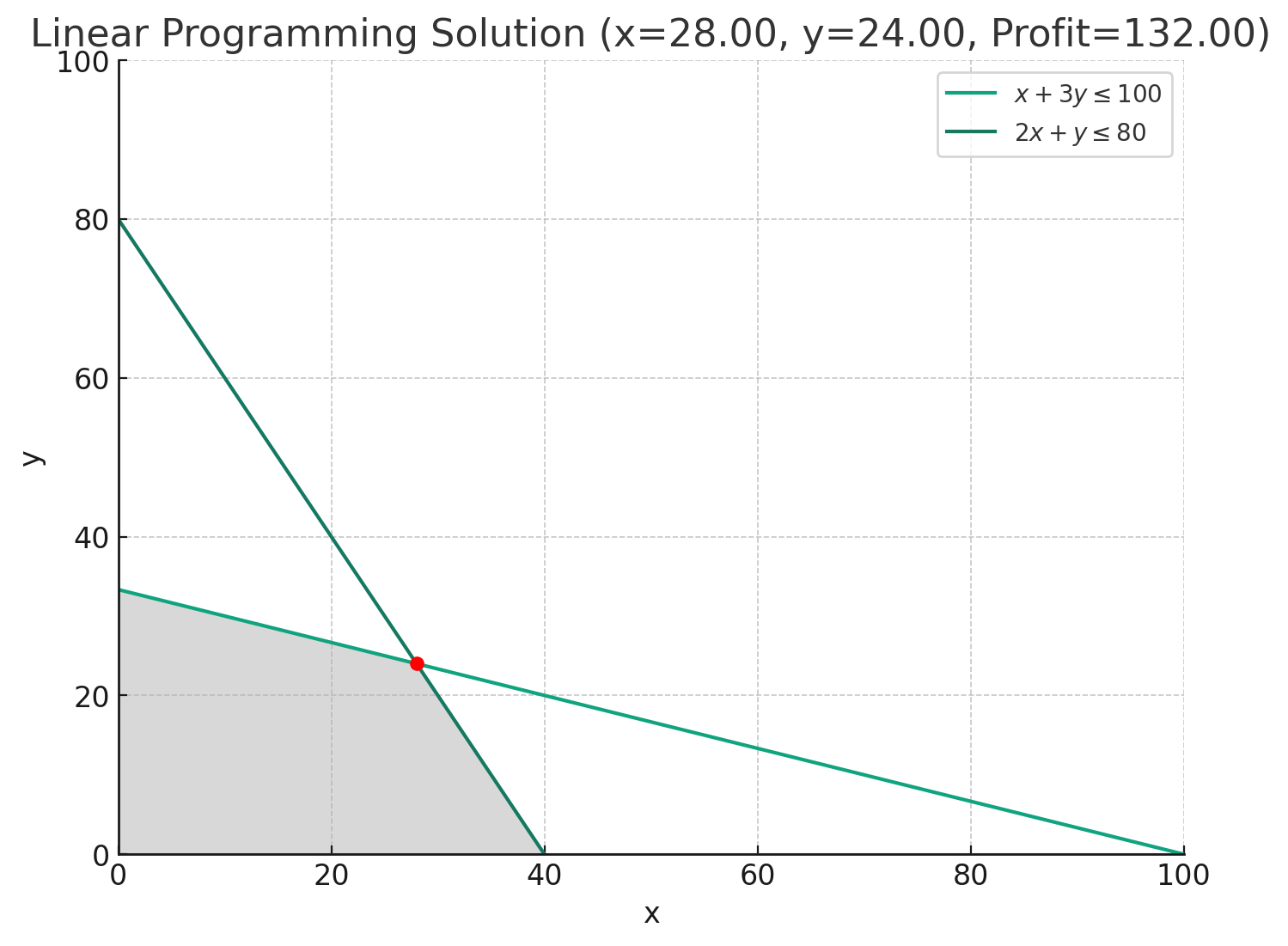



Focus: LP deals specifically with linear equations and inequalities. This means it works with problems where relationships are represented as straight lines (hence 'linear').
Objective: It always aims to find the maximum or minimum value of a linear equation, known as the objective function. For example, maximizing profit or minimizing cost.
Method: LP uses specific mathematical methods, like the Simplex algorithm, to find the best solution.
Constraints: All constraints in LP are linear (straight-line relationships). For instance, you can't spend more than a certain budget, or you need at least a certain amount of some ingredient.
Solutions: Solutions in LP are often numerical and can include fractions or decimals.

